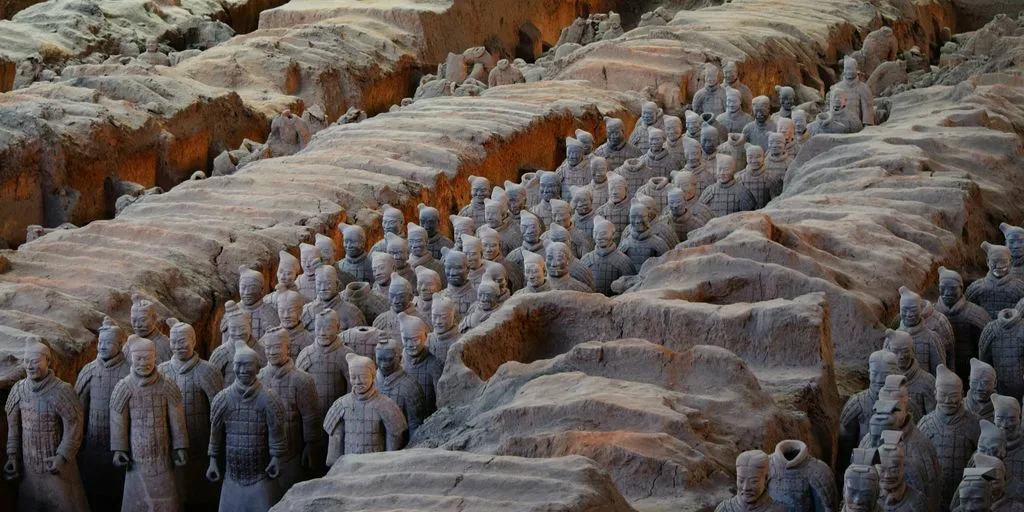
The Architectural Marvels of Ancient Civilizations
Pyramids of Egypt: Engineering Feats
The ancient world is replete with architectural marvels that showcase the ingenuity, creativity, and craftsmanship of early civilizations. The Pyramids of Egypt stand as a testament to the engineering prowess of the ancient Egyptians. These colossal structures, built as tombs for pharaohs, have fascinated historians and tourists alike for centuries. The precision with which these pyramids were constructed continues to baffle modern engineers.
The Acropolis of Athens: A Symbol of Democracy
The Acropolis of Athens is not just an architectural wonder but also a symbol of democracy and Western civilization. Perched high above the city, this ancient citadel includes the Parthenon, a temple dedicated to the goddess Athena. The Acropolis serves as a reminder of the enduring legacy of ancient Greece and its contributions to modern society.
Machu Picchu: The Lost City of the Incas
Hidden high in the Andes Mountains, Machu Picchu is often referred to as the Lost City of the Incas. This ancient site offers a glimpse into the sophisticated urban planning and architectural skills of the Inca civilization. The stone structures, terraces, and intricate pathways make Machu Picchu a must-visit destination for those interested in ancient ruins and historic neighborhoods.
Exploring these architectural marvels is like taking a trip through time, where each stone and structure tells a story of human ingenuity and cultural heritage.
Art and Symbolism in Ancient Cultures
Egyptian Hieroglyphs: The Language of the Gods
Egyptian hieroglyphs are more than just symbols; they are a window to the past. These intricate carvings tell stories of gods, pharaohs, and everyday life. Each symbol holds a deeper meaning, connecting us to a time when writing was an art form.
Greek Pottery: Stories on Clay
Greek pottery is like a comic book of ancient times. The detailed images on vases and pots depict myths, battles, and daily activities. These pieces are not just art; they are historical records that give us insight into Greek culture and beliefs.
Mayan Murals: Colorful Chronicles
Mayan murals are vibrant and full of life. These colorful paintings cover the walls of ancient structures, illustrating the Mayans’ rich history and traditions. The murals are a testament to the Mayans’ artistic skills and their ability to capture the essence of their world in vivid detail.
Art in ancient cultures is not just about beauty; it’s about storytelling and preserving history. Each piece, whether it’s a hieroglyph, a pottery shard, or a mural, offers a glimpse into the lives and beliefs of ancient peoples.
Ancient Fashion: Clothing and Adornments
The Roman toga was more than just a piece of clothing; it was a symbol of status and citizenship. Worn by Roman men, the toga was a large, draped garment that required skill to wear properly. It was often made from wool and could be quite heavy. The way it was draped and the color of the fabric indicated the wearer’s social status. For instance, a toga with a purple border was reserved for senators and high-ranking officials.
Ancient Egyptians were masters of jewelry-making, using gold, gemstones, and intricate designs to create stunning pieces. Jewelry was not just for adornment; it held significant cultural and religious meaning. Amulets, for example, were believed to protect the wearer from harm. Both men and women wore jewelry, and it was common to see elaborate necklaces, bracelets, and rings. The craftsmanship was so advanced that many pieces have survived thousands of years and are still admired today.
Silk was a highly prized fabric in ancient China, often associated with royalty and the elite. The process of making silk was a closely guarded secret, and the fabric was used to make everything from clothing to wall hangings. Silk garments were not only beautiful but also comfortable and durable. The Chinese also developed various dyeing and weaving techniques to create intricate patterns and designs on silk fabrics. This luxurious material was so valuable that it was even used as currency in some cases.
Rituals and Traditions of Ancient Societies

The Aztecs believed that sacrifices were essential to please their gods and ensure the sun would rise each day. They performed elaborate ceremonies, often involving human sacrifices, to maintain cosmic order. These rituals were deeply rooted in their myth and religion, reflecting their beliefs and customs.
Roman festivals were grand events that celebrated the empire’s glory and the gods’ favor. From Saturnalia to Lupercalia, these festivals included feasts, games, and theatrical performances. They were not just about fun; they reinforced social bonds and the empire’s cultural identity.
Hindu rituals are diverse, ranging from daily pujas to elaborate ceremonies. These practices, often involving offerings and prayers, aim to connect with the divine and seek blessings. Hindu rituals also include initiation ceremonies, which mark important life stages and promote mindfulness and inner peace through daily rituals.
Ancient societies had rich traditions that shaped their cultures and influenced their daily lives. These rituals, whether simple celebrations or arduous trials, were integral to their identity and spiritual well-being.
Preservation of Ancient Heritage in Modern Times
Museum Exhibits: Guardians of History
Museums play a crucial role in keeping our past alive. They safeguard priceless artifacts and offer a window into ancient civilizations. From the Taj Mahal to the Eiffel Tower, these exhibits help us connect with our roots and understand our shared history.
Archaeological Sites: Windows to the Past
Archaeological sites are like time machines. They let us step back and explore ancient worlds. These sites are not just about old stones; they tell stories of our ancestors and their way of life. Preserving these sites is vital for future generations to learn and appreciate their heritage.
Digital Archives: Preserving History in the Digital Age
In today’s digital world, preserving history has taken a modern twist. Digital archives store vast amounts of information, making it accessible to everyone. This method ensures that even the smallest details of our past are not lost. It’s a way to blend ancient traditions with modern advancements.
Discover how cultural heritage conservation and education are raising awareness and building skills to preserve traditions and history for future generations.
Influence of Ancient Civilizations on Modern Culture
Greek Philosophy: Foundations of Western Thought
Greek philosophy laid the groundwork for Western thought. Thinkers like Socrates, Plato, and Aristotle explored ideas about ethics, politics, and science. Their influential ideas continue to shape modern education and philosophy. Concepts such as democracy and logic have roots in ancient Greece.
Roman Law: The Basis of Legal Systems
Roman law has had a lasting impact on modern legal systems. The Romans developed a complex legal code that influenced many countries. Today, principles like "innocent until proven guilty" and contracts trace back to Roman times. Their legal innovations are still relevant in courts around the world.
Ancient Architecture: Inspirations in Modern Design
Ancient architecture continues to inspire modern design. Structures like the Parthenon and the Colosseum showcase advanced engineering and aesthetics. Modern architects often draw from these timeless designs to create buildings that blend tradition with innovation. The use of columns, domes, and arches in contemporary architecture reflects this enduring influence.
The legacy of ancient civilizations is evident in many aspects of our daily lives, from the laws we follow to the buildings we admire. Their contributions have shaped the world in profound ways.
Culinary Traditions from Ancient Times
Roman Banquets: Feasts of the Empire
Imagine dining like an emperor! Roman banquets were lavish affairs that showcased the wealth and power of the elite. These feasts featured multiple courses, including exotic dishes like peacock and flamingo. The Romans also loved their wine, often mixing it with honey and spices to create unique flavors. These grand events were not just about food but also about socializing and displaying one’s status.
Ancient Egyptian Cuisine: Food of the Pharaohs
The ancient Egyptians had a diet that was both diverse and nutritious. They enjoyed bread, beer, and a variety of fruits and vegetables. Meat was a luxury, often reserved for the wealthy. Fish and poultry were more common, and they had a particular fondness for figs and dates. The use of herbs and spices added flavor to their dishes, making their cuisine both tasty and aromatic.
The Egyptians believed that food was a gift from the gods, and they often included offerings in their religious rituals.
Mayan Chocolate: The Drink of the Gods
The Mayans were among the first to cultivate cacao and turn it into chocolate. However, their version was quite different from the sweet treat we enjoy today. Mayan chocolate was a bitter, frothy drink often flavored with chili peppers and spices. It was considered sacred and was used in various ceremonies and rituals. The Mayans believed that chocolate had divine properties and often referred to it as the "drink of the gods."
- Flavors without borders: The Mayans’ innovative use of spices in chocolate is a testament to their culinary creativity.
- A gastronomic journey: Exploring ancient cuisines offers a fascinating glimpse into the past.
- Discover the United Arab Emirates: Modern culinary practices still draw inspiration from ancient traditions.
- The world’s oldest recipes: Ancient dishes provide a window into the daily lives of early civilizations.
- Cooking – world cuisines: The evolution of food techniques can be traced back to these ancient cultures.
Conclusion
In 2024, exploring the rich cultural heritage of ancient civilizations offers us a unique window into the past. By visiting historical landmarks and learning about the stories behind them, we gain a deeper appreciation for the diverse cultures that have shaped our world. These ancient sites are not just remnants of history; they are living testaments to human creativity, resilience, and innovation. As we continue to uncover and preserve these treasures, we ensure that future generations can also experience and learn from them. So, let’s keep the spirit of discovery alive and continue to explore the wonders of our shared heritage.
Frequently Asked Questions
What are some famous architectural marvels of ancient civilizations?
Some well-known architectural wonders from ancient times include the Pyramids of Egypt, the Acropolis of Athens, and Machu Picchu in Peru.
How did ancient cultures use art and symbols?
Ancient cultures used art and symbols in various ways, like Egyptian hieroglyphs for writing, Greek pottery to tell stories, and Mayan murals to depict colorful scenes.
What kind of clothing and adornments did ancient people wear?
Ancient people wore different types of clothing and jewelry. For example, Romans wore togas, Egyptians adorned themselves with gold jewelry, and Chinese people prized silk.
What were some common rituals and traditions in ancient societies?
Ancient societies had many rituals and traditions. The Aztecs practiced sacrifices, Romans celebrated with festivals, and Hindus performed spiritual rituals.
How is ancient heritage preserved in modern times?
Today, ancient heritage is preserved through museum exhibits, archaeological sites, and digital archives, which help keep history alive.
How do ancient civilizations influence modern culture?
Ancient civilizations influence modern culture in many ways, such as through Greek philosophy, Roman law, and ancient architectural designs that inspire modern buildings.






